So the microprocessor steering the volume setting is fully functional.
Therefore it must be something directly having to do with the mechanical or electrical parts around the volume knob.
Hans
Therefore it must be something directly having to do with the mechanical or electrical parts around the volume knob.
Hans
Hi Hans,
thanks for the fast reply - I studied the circuit diagram which I found in this thread and do not find the pulse line to the processor which triggers the volume adjustment
Dieter
thanks for the fast reply - I studied the circuit diagram which I found in this thread and do not find the pulse line to the processor which triggers the volume adjustment
Dieter
I agree. Unfortunately, after a certain age, all audio components with customer-specific programmed processors are often no longer repaired or supported by the manufacturer themselves - regardless of the purchase price.There is a pretty good chance the processor/rom are cooked and only ML can fix that. Instead of having random technicians poke inside why don't you send it to the factory?
A good technician can reach a diagnosis quickly but a poor one can do plenty of damage. Worth taking the risk?
But a very good technician is able to create a software for programming a new EEPROM or flash programmable parts (for replace a mask programmable MCU) by re-engineering the firmware with help of the owner's manual.
But until now I haven't heard from such guys unfortunately - OTOH there are many old expensive stuff like cd players and components like this preamp with such problems around the MCU area and the RC transmitter and receiver units.
At first glance (according
https://www.gzhifi.com/xinhe/gallery.php?id=133&img=2578
and the attached images) I note follow deficiencies:
1) the Schaffner IEC connector for power cord with integrated rf filter parts (go to image No 13 - I would replace it in general by a passive version without rf parts)
2) some versions uses silver capacitors from Sprague e. g. near by the heat sink from voltage regulator for the MCU unit and the heat sinks near by the big blue main capacitors (go to image No 6). I would replace it in general, even due the thermal stress.
Attachments
-
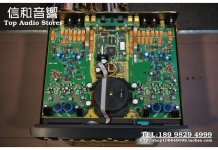 1599340118587852047.jpg128.3 KB · Views: 175
1599340118587852047.jpg128.3 KB · Views: 175 -
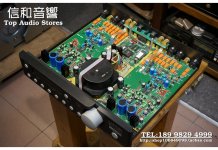 1599340119959066111.jpg134.1 KB · Views: 193
1599340119959066111.jpg134.1 KB · Views: 193 -
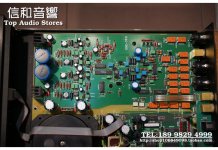 1599340119498273021.jpg135.5 KB · Views: 138
1599340119498273021.jpg135.5 KB · Views: 138 -
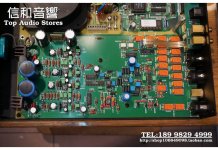 1599340119021041023.jpg142.3 KB · Views: 145
1599340119021041023.jpg142.3 KB · Views: 145 -
 1599340119245488892.jpg120.9 KB · Views: 138
1599340119245488892.jpg120.9 KB · Views: 138 -
 MLb (1).jpg138.6 KB · Views: 171
MLb (1).jpg138.6 KB · Views: 171 -
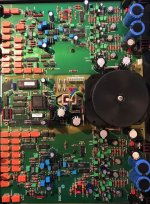 IMG_0160.jpg620.1 KB · Views: 185
IMG_0160.jpg620.1 KB · Views: 185 -
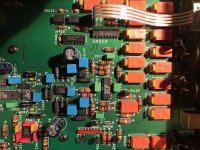 IMG_0143.jpg542.7 KB · Views: 138
IMG_0143.jpg542.7 KB · Views: 138 -
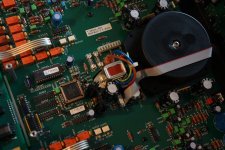 MARK-LEVINSON-No-380-extra-big-29439-651.jpg250.8 KB · Views: 146
MARK-LEVINSON-No-380-extra-big-29439-651.jpg250.8 KB · Views: 146 -
 tl2w52cjomx5cwtemloe.jpg94.1 KB · Views: 132
tl2w52cjomx5cwtemloe.jpg94.1 KB · Views: 132 -
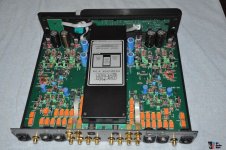 1988966-500a5463-mark-levinson-380.jpg176.3 KB · Views: 140
1988966-500a5463-mark-levinson-380.jpg176.3 KB · Views: 140 -
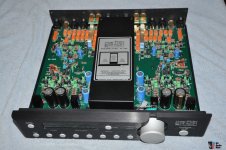 1988965-7e6014e9-mark-levinson-380.jpg158.9 KB · Views: 154
1988965-7e6014e9-mark-levinson-380.jpg158.9 KB · Views: 154 -
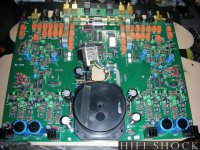 no-38-1b-mark-levinson.jpg198.9 KB · Views: 163
no-38-1b-mark-levinson.jpg198.9 KB · Views: 163 -
 bjwuagabmuj9ii96foen.jpg105.8 KB · Views: 123
bjwuagabmuj9ii96foen.jpg105.8 KB · Views: 123 -
 uylax6hrwhm7ugboo265.jpg691.4 KB · Views: 121
uylax6hrwhm7ugboo265.jpg691.4 KB · Views: 121 -
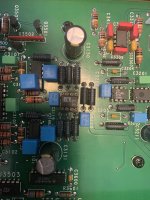 ldzvm6dpxocacbvx8kup (1).jpg442.7 KB · Views: 118
ldzvm6dpxocacbvx8kup (1).jpg442.7 KB · Views: 118 -
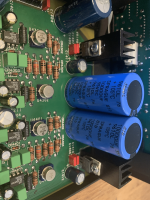 btyafi2s9zl6ixayyfcl.png872.3 KB · Views: 129
btyafi2s9zl6ixayyfcl.png872.3 KB · Views: 129 -
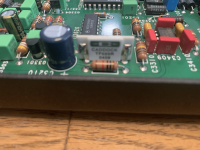 y4sxagzf4dn8ty5ihfh9.png687.4 KB · Views: 142
y4sxagzf4dn8ty5ihfh9.png687.4 KB · Views: 142 -
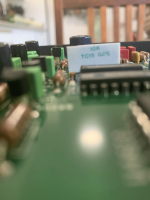 unuybkcvoslb4y2vbdvx.png627.7 KB · Views: 149
unuybkcvoslb4y2vbdvx.png627.7 KB · Views: 149
Last edited:
The PEEL 18CV8 chip is likely the problem. I had a similar problem and had to replace it. It is a known issue. It is a little challenging because you have to program the chip so you need a chip, the code, and a programmer. The chip is used as some glue logic. it looks like they tacked on some features after the hardware design was done and needed a little more logic control.
Last edited: